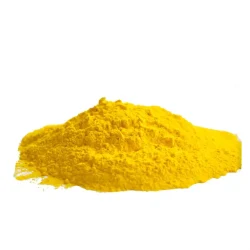Types of Ultramarine Pigments
2024-03-05
Ultramarine pigments are a group of inorganic pigments known for their vivid and intense blue color. These pigments have been used for centuries and are valued for their stability, lightfastness, and rich blue hue. Here's an overview of ultramarine pigments:
Types of Ultramarine Pigments:
1. Ultramarine Blue (PB29):
- The most common and traditional ultramarine pigment. It has a deep, brilliant blue color and is made from the mineral lapis lazuli. It has good lightfastness and chemical stability.
2. Ultramarine Green (PG24):
- A greenish variant of ultramarine blue. It is less common than ultramarine blue but offers a unique greenish-blue shade.
3. Ultramarine Violet (PV15):
- A violet or purplish version of ultramarine pigments. It is less common than ultramarine blue and is used for creating various violet and purple shades.
Characteristics:
1. Color:
- Ultramarine pigments are known for their intense blue color. The shade can vary slightly depending on the specific type of ultramarine pigment.
2. Chemical Composition:
- Traditionally, ultramarine blue was derived from the semi-precious gemstone lapis lazuli. Modern ultramarine pigments are synthetically produced through chemical processes. The primary component is sodium aluminum sulfosilicate.
3. Lightfastness:
- Ultramarine pigments generally have excellent lightfastness, meaning they resist fading when exposed to light over time.
4. Heat Stability:
- Ultramarine pigments are stable at high temperatures, making them suitable for use in a variety of applications, including paints and plastics.
5. Chemical Stability:
- These pigments are chemically stable and do not react with acids or alkalis, contributing to their durability.
6. Transparency:
- Ultramarine pigments are often transparent, allowing for layering and glazing techniques in painting.
7. Non-Toxic:
- Ultramarine pigments are considered non-toxic and safe for use in various applications, including cosmetics.
8. Versatility:
- Ultramarine pigments are used in a variety of mediums, including oil and acrylic paints, watercolors, inks, plastics, textiles, and cosmetics.
Applications:
1. Fine Arts:
- Ultramarine pigments have been a staple in the palette of artists for centuries. They are used in oil paints, acrylics, watercolors, and other artistic mediums.
2. Plastics:
- Due to their stability and vibrant color, ultramarine pigments are commonly used in the coloring of plastics, including toys, packaging, and consumer goods.
3. Textiles:
- Ultramarine pigments are employed in the textile industry for dyeing fabrics. They provide a range of blue shades for clothing and other textiles.
4. Inks:
- Ultramarine pigments are used in the production of high-quality printing inks for various applications, including packaging and publications.
5. Cosmetics:
- Ultramarine pigments are used in cosmetics, such as eyeshadows, nail polishes, and lipsticks, to achieve blue shades.
6. Industrial Coatings:
- These pigments find applications in industrial coatings, including automotive paints and coatings for machinery, where durability and color stability are essential.
7. Ceramics:
- Ultramarine pigments can be used in the coloring of ceramics, providing blue hues in glazes and pottery.
8. Historical Use:
- Historically, ultramarine blue was a prized and expensive pigment used in religious art during the Renaissance. It was often reserved for depicting the robes of the Virgin Mary.
Ultramarine pigments have a rich history and continue to be widely used in various industries for their brilliant blue color and exceptional properties. Whether in fine arts, plastics, textiles, or cosmetics, ultramarine pigments remain valued for their ability to produce vibrant and enduring blue hues.



